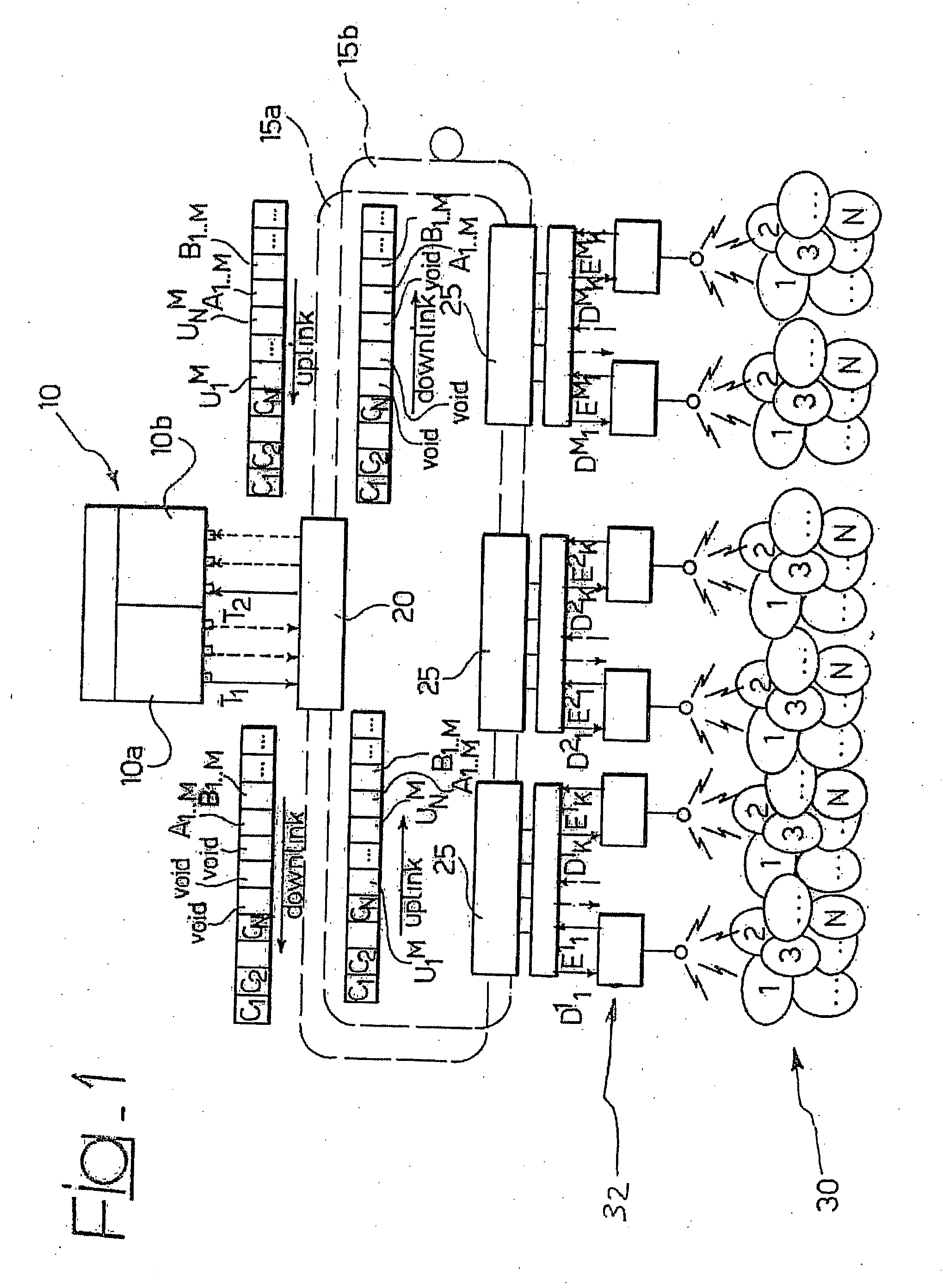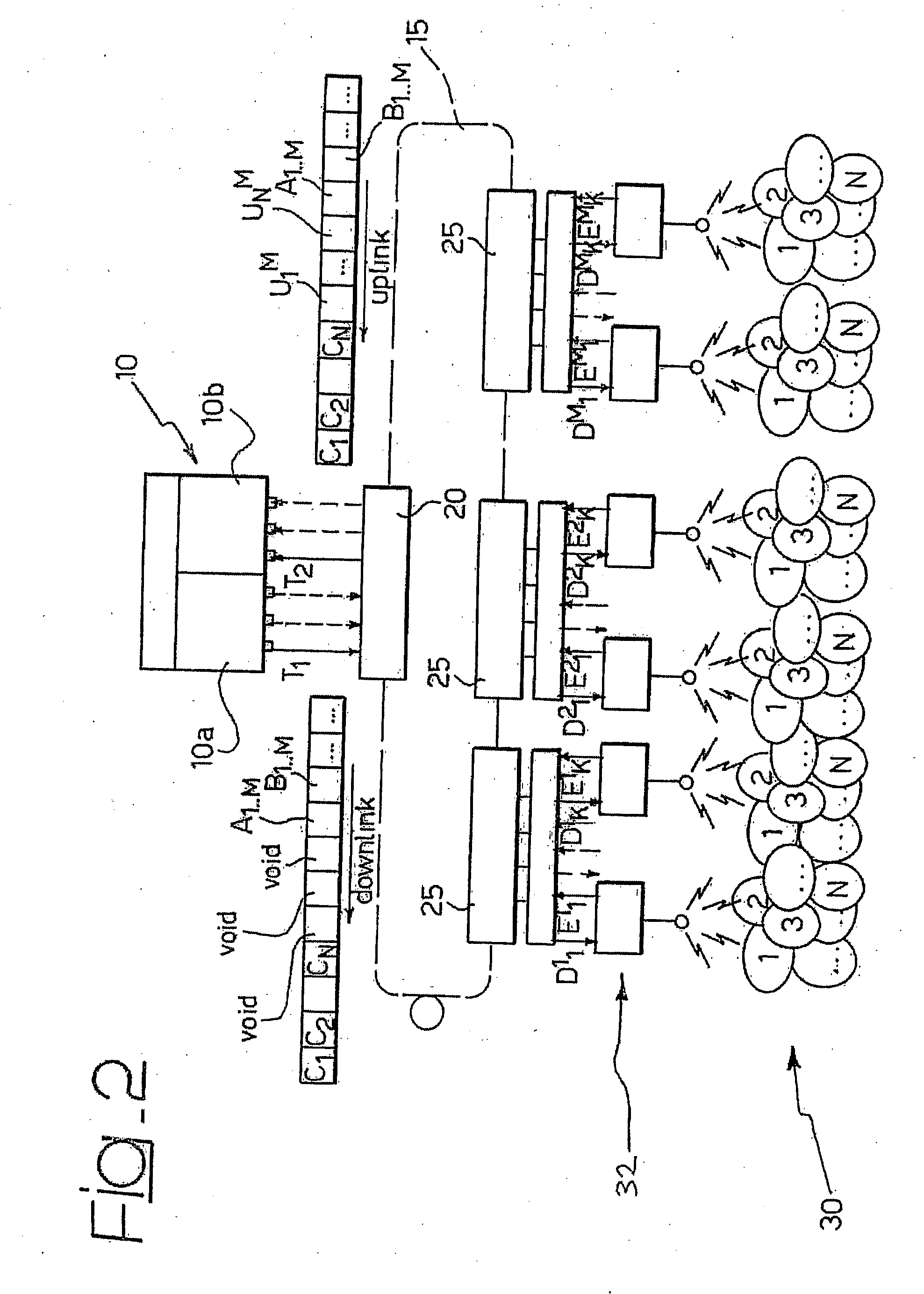Radio-Access Method, Related Radio Base Station, Mobile-Radio Network and Computer-Program Product Using an Assignment Scheme for Antennas' Sectors
- Summary
- Abstract
- Description
- Claims
- Application Information
AI Technical Summary
Benefits of technology
Problems solved by technology
Method used
Image
Examples
Embodiment Construction
[0053]FIG. 1 provides an exemplary schematic representation of the architecture of a radio base station (BTS or Node B) in a mobile-radio network (not shown as whole). Specifically, a radio base station 10 is considered, which has an optical-to-digital interface with three data flows in the downlink and, accordingly, three data flows in the uplink.
[0054]The radio base station 10 (which may be in the form of a conventional BTS) comprises a subsystem 10a that handles transmission of the signals in the downlink for the three data flows, and a subsystem 10b, which comprises the apparatuses dedicated to reception of the signals in the uplink.
[0055]T1 represents the first of the three flows in the downlink and T2 the first of the three flows in the uplink. In the example considered, each flow is routed onto an optical-fibre ring 15a and 15b by means of an optical transmitter, in the downlink case, or optical receiver, in the uplink case. The flows can be routed on the same optical fibre 1...
PUM
 Login to View More
Login to View More Abstract
Description
Claims
Application Information
 Login to View More
Login to View More - R&D
- Intellectual Property
- Life Sciences
- Materials
- Tech Scout
- Unparalleled Data Quality
- Higher Quality Content
- 60% Fewer Hallucinations
Browse by: Latest US Patents, China's latest patents, Technical Efficacy Thesaurus, Application Domain, Technology Topic, Popular Technical Reports.
© 2025 PatSnap. All rights reserved.Legal|Privacy policy|Modern Slavery Act Transparency Statement|Sitemap|About US| Contact US: help@patsnap.com



